Natures Gem
A pearl is a natural creation of a shellfish living in a lake or the sea that filters water to obtain the nutrients it needs to live. The shellfish's body can occasionally be irritated by bacteria, bubbles, or other small objects. To protect itself from the elements, a nacre sac is created to enclose these small particles. Gradually, more layers of nacre are deposited to isolate the irritant until, eventually, a lustrous pearl develops.
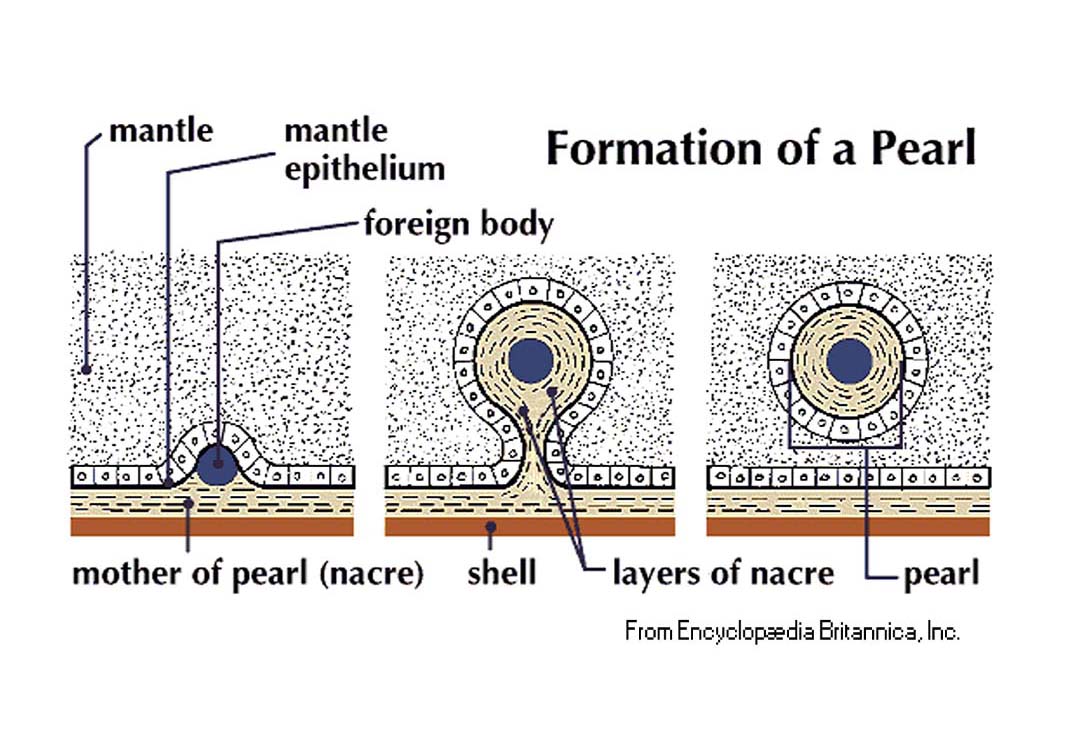

Despite this, it is extremely rare for natural pearls to occur in this way, and also extremely rare for a natural pearl to meet the strict criteria now established in the industry regarding shape. Since ancient times, humans have tried to unlock the secrets of nature in order to initiate the pearl making process.

Natural, Cultured & Simulated Pearls
Natural and Cultured pearls are both "real" pearls, being made of the same material, grown by the same molluscs and extracted in the same way.
The difference is that with cultured pearls, the initial process which causes the pearl generation has been initiated by a pearl farmer, rather than having occurred by chance in the wild.
Simulated pearls, which we do not supply, are simply imitations which have been manufactured using an artificial process.
Harnessing Nature
The modern pearl culturing process we still essentially use today, was developed theoretically by British biologist and sustainable fishing advocate William Saville-Kent, between 1892 and 1895, whilst studying the Great Barrier reef on behalf of the Australian government.
His involvement has only fairly recently come to light and for many years, it was believed the Japanese – notably Mikimoto, Nishikowa and Mise were responsible for perfecting the technique.

Akoya
Around the world, akoya pearls are treasured by gemstone lovers. Known for their beautiful colors and captivating luster, these pearls never disappoint. Designers often use these pearls for elegant necklaces. Additionally to necklaces, Akoya Pearls are often used to create other types of pearl jewellery, such as earrings and pendants. These high-quality pearls look spectacular in jewelry when combined with other gems.


Freshwater
With lustre, surface, and shape that rivals Akoyas, freshwater pearls offer affordable elegance. No matter what you prefer, white pearls, black pearls, pink pearls, lilac pearls, baroque pearls, or round pearls, you can enjoy the pleasure of wearing or giving pearls whenever the mood strikes, no matter what the occasion.
South Sea
Among the most luxurious types of pearls are South Sea pearls. Pinctada maxima is a saltwater oyster native to the Indian and Pacific Oceans, where the South Sea pearl is cultivated.
A typical South Sea pearl will have a diameter between 8mm and 16mm and is the largest of all the cultured pearl types. The pearl is grown in the oyster for an average of 2 to 3 years before it is ready for harvest. The South Sea pearl is bead-nucleated, symmetrical and round in shape.
Silver-lipped oysters are grown from Thailand to Australia in pristine coastal waters, where they produce white pearls with delicate overtones of silver, pink, or blue. Off the coasts of the Philippines and Indonesia, gold-lipped oysters usually produce natural golden pearls that range from light shades of yellow to deep shades of orange.
The very finest jewellery is made from South Sea pearls.
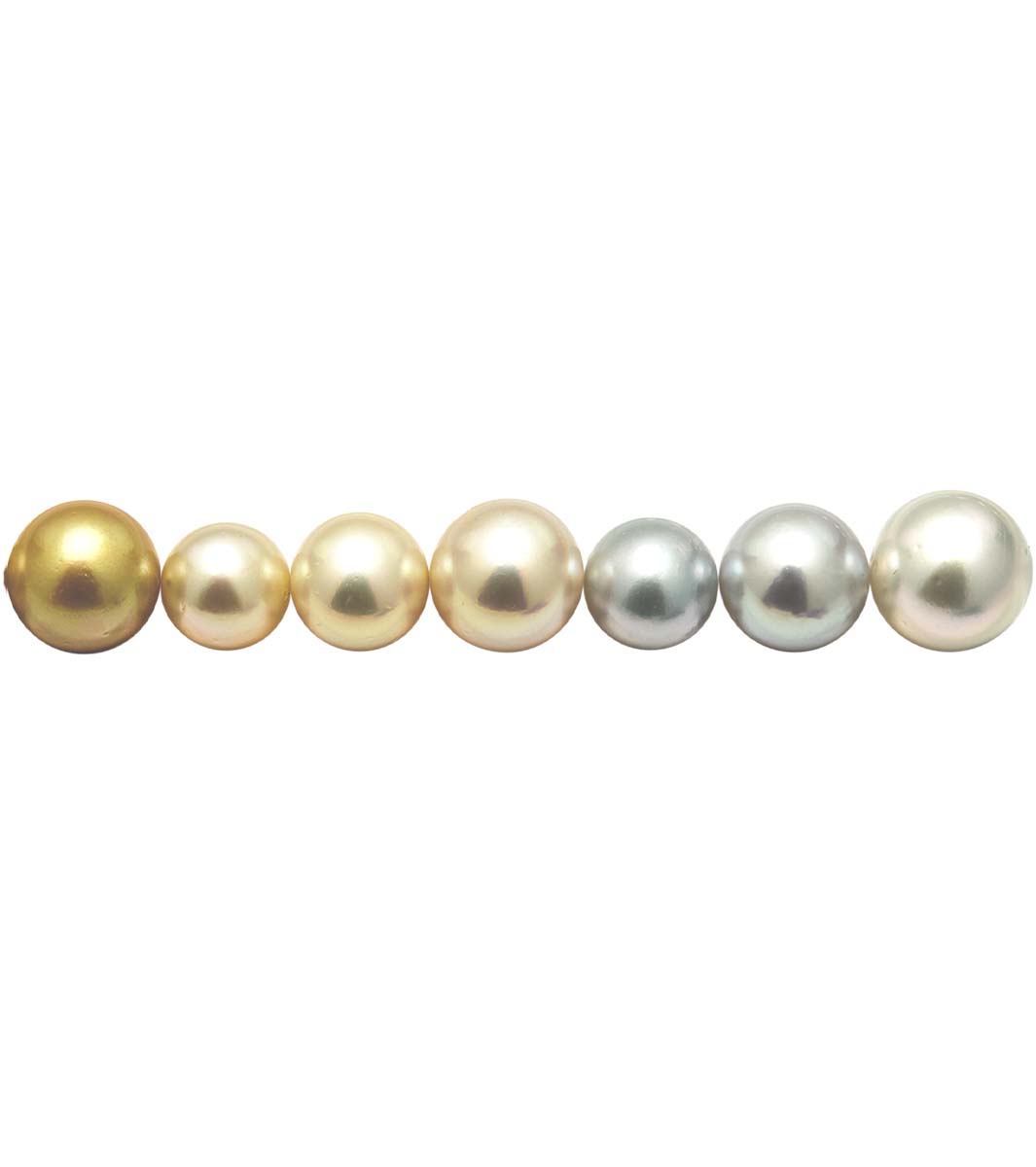
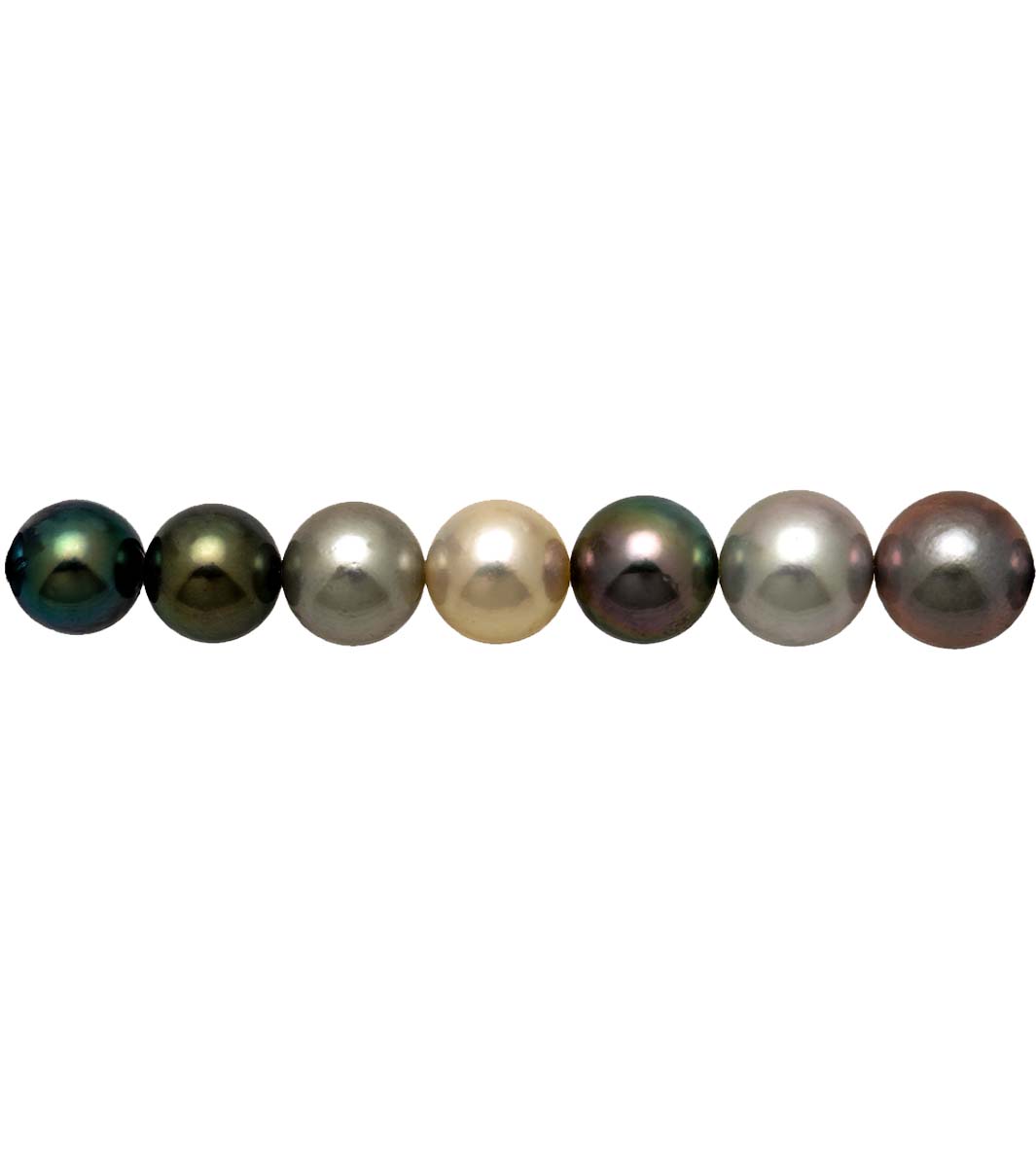
Tahitian
Among all pearls, the Tahitian pearl is one of the most exotic.
Pearls from French Polynesia are grown in the warm saltwater lagoons of the South Pacific Ocean in the black-lipped Pinctada margaritifera cumingii oyster.
The tahitian pearl typically reaches a size of 8 to 14mm in diameter, has a shell bead nucleus, and becomes more valuable as the luster, quality and size of the pearl increase.
Tahitian pearls are also called black South Sea pearls because their body color is silver, gray or black, with shimmering overtones of pink, green, and blue.
Designers often choose Tahitian pearls for their unique and distinctive shapes, including classic round, teardrop, and baroque shapes.
Stylish and colorful, these beautiful pearls are suitable for both day and evening wear.
Lustre
Lustre is the quality of reflected light from the pearl, and is generally thought of as its shine or brightness. The thicker the layers of nacre that build on a pearl, the deeper the lustre and more attractive the pearl will appear.
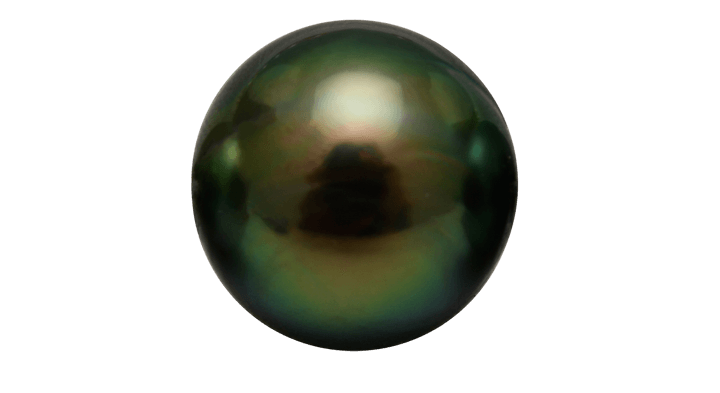
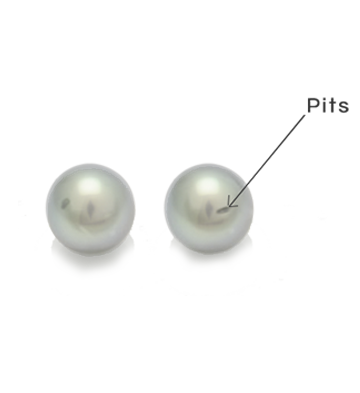
Surface Quality
Ideally a pearl will have a completely blemish free surface, without bumps,pits or gaps caused by uneven coating by the mollusc. It is a factor, which is ultimately beyond the control of the farmer. In reality most pearls are not born perfect-similar to us humans, and some markings are to be expected. They can be viewed as adding to their individuality and personality. Commercially however,the more perfect the skin and blemish free the surface, the higher the resulting price of the pearl.
Shape
As a rule, a perfect round shape is considered most desirable. Shapes can deviate from perfect round by many degrees, with each degree reducing the perceived value of the pearl. The antithesis of the round pearl is the semi baroque or baroque pearl with its free-form outline, the exception being perfect pear or drop shapes which are highly desirable as matched pairs for earrings.
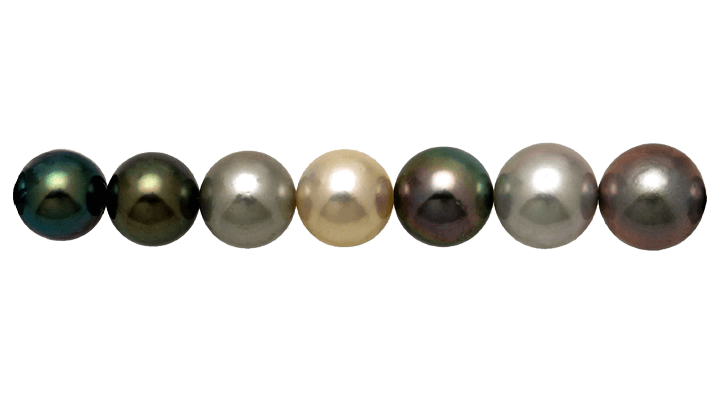
Colours
Colour in pearls is a matter of either pure body colour or overtones of body colours. In non-white pearls such as Tahitian and Gold South Sea Pearls, the strength of colour is seen as a positive value factor.
While with white Akoya pearls the overtone tint of the pearl-most often pinky white, is considered to be the most attractive. It must be remembered however, that the wearers own skin tone and personal taste will have the ultimate judgement on colour choice.
Pearl Care
Pearls are natural gems,an organic product created by a living creature. As with all things born of Mother Nature, pearls need to be given a certain amount of care and treated with some measure of respect in order to maintain their beauty and lustre. Pearls are composed of a form of Calcium Carbonate, the same organic substance that builds our bones and teeth. For this reason, they won’t stand up well to repeated hard physical stresses or to being constantly exposed to strong chemicals. Your pearl jewellery will give you a lifetime of wear if you simply look after it with care and pay attention to a few details. The general, often-quoted rule of thumb for wearing your pearls is “last on, first off”.

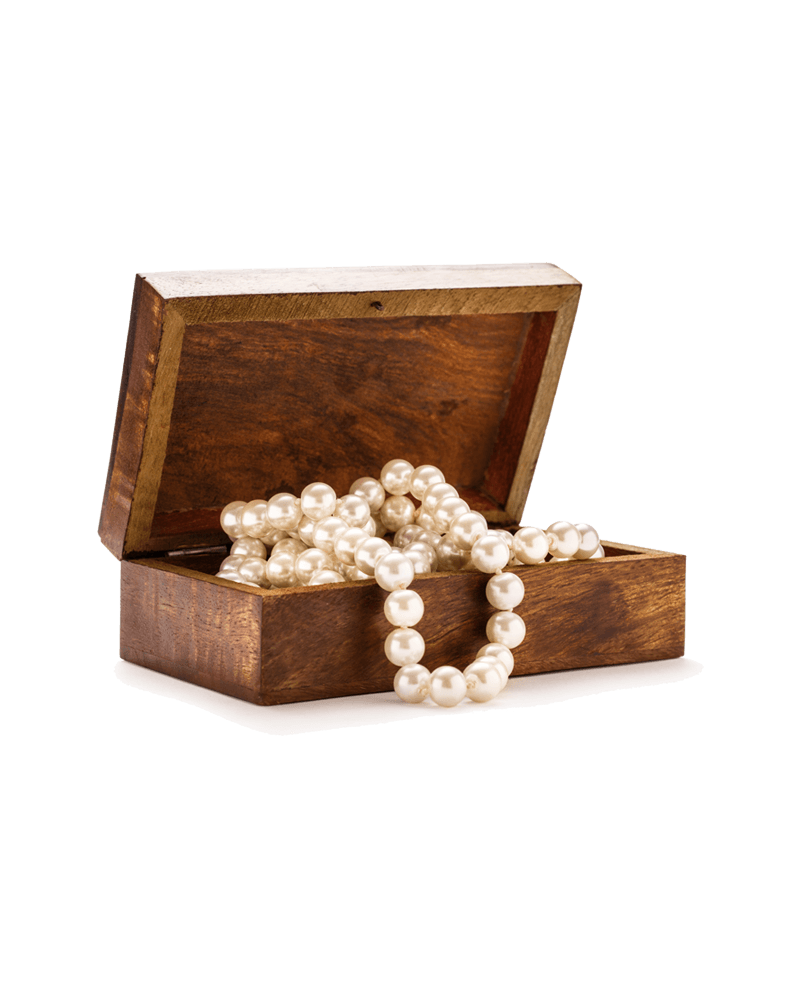
Storage
During the summer, or while on holiday in sunny climes, it’s best not to leave your pearls in direct sunlight or expose them to extreme temperatures. We recommend that pearls are ideally kept in a soft cloth bag inside a lined jewellery box to prevent scratches when not being worn. It's best to keep your pearls away from other items of jewellery which may have sharpe edges that can easily damage your pearls.

